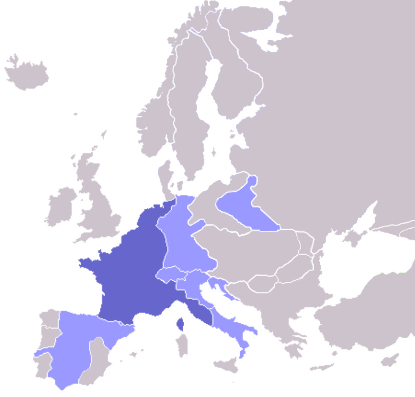Note that Polish mobilization (excluding improvised units, which were not planned) ended on 14.09.1939. But of course in fact it never ended as planned, because it was interrupted by German air and ground military actions.
Here a very interesting table taken from the article by Rafał Białkowski (pages 10 - 27):
http://www.martola.com.pl/biuletyn-dws-2010-07_HQ.pdf
It shows planned strength of the Polish army* after mobilization and its real strength on 01.09.1939. As can be seen the Polish army had roughly 70% of the planned post-mobilization strength mobilized on 01.09.1939:
Two of the 3 planned reserve groups ("Kutno" and "Tarnow") were in fact non-existant when war started:
(apart from that Army "Prusy" was a reserve army, while all other armies were along the frontier)
Note that the number of AFVs includes all armoured vehicles - both tanks and armoured cars.
One cavalry regiment = 5 squadrons. Apart from regiments also non-regimental squadrons are included. Of course one cavalry squadron was more or less of 1/2 infantry company size and one regiment - of infantry battalion size.
*This table includes everything on the anti-German and anti-Slovakian front except for forces in the Coastline (which included among other units further 12 infantry battalions). It also doesn't include forces which yet on 01.09.1939 (and according to the mobilization plan) weren't on the western front, but along the Polish-Soviet border (this includes apart from other units 24 infantry battalions of KOP, Border Protection Corps - 22 rifle battalions and 2 fortress battalions) and in eastern Poland (apart from other units 10 infantry battalions - all of them National Defence).
And here planned dislocation of Polish forces along main directions of German attack:
A - from East Prussia towards Warsaw and Brest (A "Modlin", odwód "Wyszków" and SGO "Narew")
B - from West Pomerania and East Prussia towards Torun and Poznan (A "Pomorze" and A "Poznań")
C - from Silesia towards Warsaw (odwód "Kutno", A "Łódź", A "Prusy" and A "Kraków" in Czestochowa gap)
D - from Upper Silesia and Czechoslovakia (rest of A "Kraków", A "Karpaty" and odwód "Tarnów")
dispositional units of the CiC (still being formed Warsaw Armored-Motorized Brigade and other units)
battalions / squadrons / HMGs / light arty / heavy arty / AA arty / AT arty / AVFs (as in the previous table):
Those 455 planned infantry battalions (of which 316 actually mobilized on 01.09.1939) included:
39 infantry divisions with 353 battalions (including 24 KOP and 12 ON)
56 ON (National Defence) usually weak battalions (including 14 in 3 mountain brigades and 42 attached to individual armies and operational groups)
14 KOP (Border Protection Corps) battalions - 5 regiments (12) and 2 independent battalions
10 rifle battalions
7 HMG and support weapons battalions
9 fortress battalions (including one company of in fact battalion strength)
3 battalions of 1st Podhale Rifle Regiment (2nd Mountain Brigade)
3 improvised battalions in Army "Pomorze" (battalion ON "Grudziadz", improvised IV./67 Inf.Rgt. and improvised "assault battalion" of 16th Infantry Division)
1. Between August 30th and 31st all Polish Air Force battle squadrons
Which on 01.09.1939 numbered in total 404 aircrafts in combat units, including:
158 fighters (108 x PZL P-11c; 20 x PZL P-11a; 30 x PZL P-7)
114 light bombers - reconnaissance (114 x PZL P-23 "Karas")
36 medium bombers (36 x PZL P-37 "Los")
84 observation - communication (49 x Lublin R-XIII; 35 x RWD-14 "Czapla")
12 seaplanes
Here you can find more info on this:
http://www.samoloty.ow.pl/str080.htm
.










